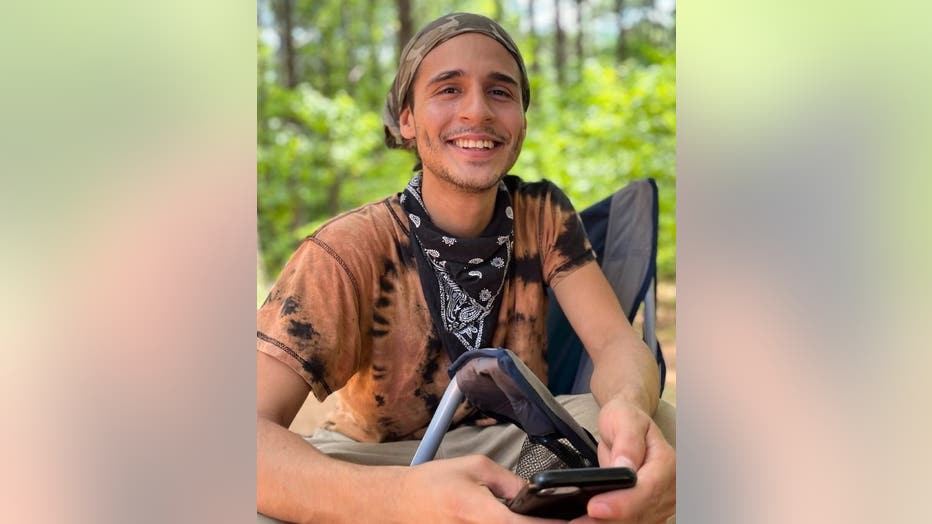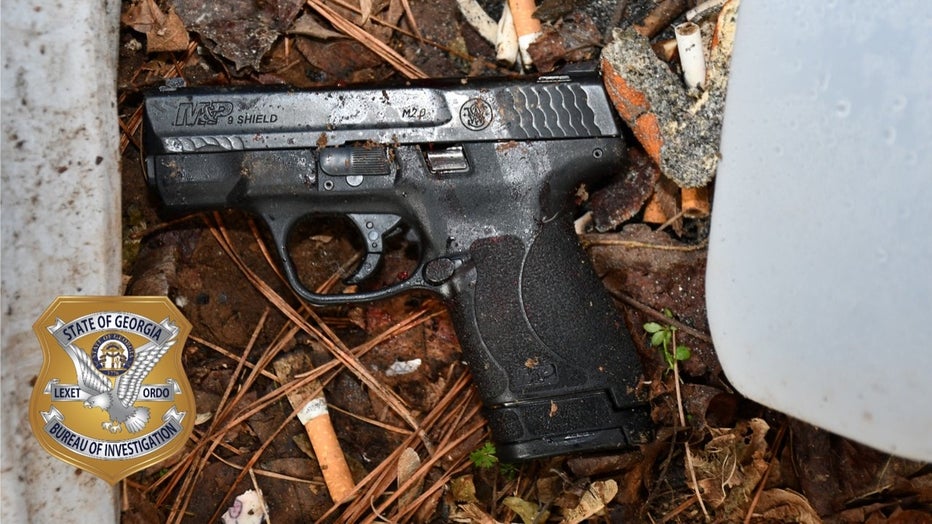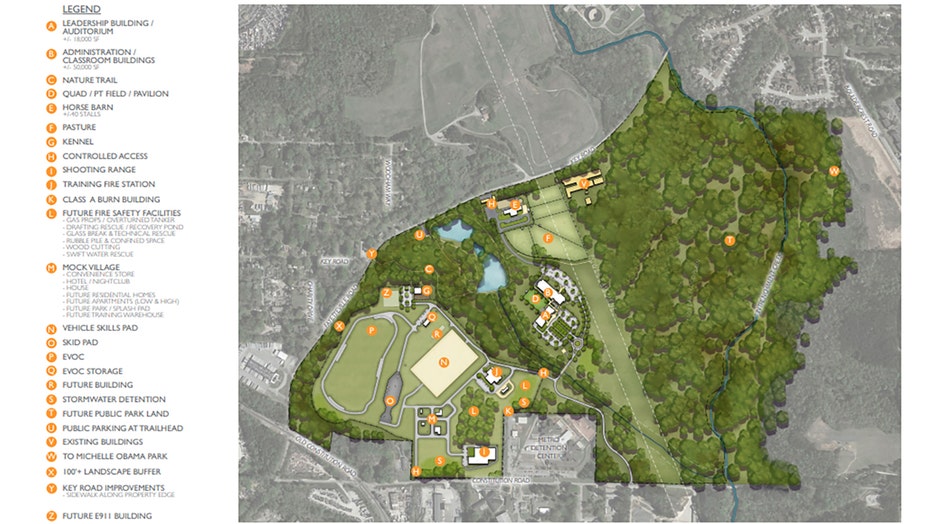GBI: Gun used to shoot trooper at site of Atlanta Public Safety Training Center bought legally by suspect
ATLANTA - The gun used in the shooting of a Georgia State Highway Patrol trooper last week at the sire of the planned Atlanta Public Safety Training Center, which opponents have dubbed "Cop City", was purchased legally by the shooter, according to the Georgia Bureau of Investigation.
Investigators say they received confirmation Monday that the firearm used in the Jan. 18 incident was bought legally in September 2020 by Manuel Esteban Paez Teran.
Teran, 26, was shot and killed after he did not comply with verbal commands from law enforcement officers trying to clear the area, the GBI has said.

Manuel Esteban Paez Teran (Provided to FOX 5)
When Teran shot and injured a state trooper, other law enforcement officers returned fire and killed Teran, the GBI has said.
Activists have questioned the police version of events and called for the release of law enforcement body camera footage. According to the GBI, the officers who were near the incident at the time of shooting were not wearing body worn cameras. Although the shooting is not captured on bodycam, there is bodycam footage of the aftermath, the GBI has said.

(Georgia Bureau of Investigation)
The injured trooper, whose name has not been released, was shot in the "pelvic-area". A forensic ballistic analysis confirmed the remains of the bullet pulled from the trooper’s body during surgery was fired from the gun recovered at the scene, which was found in Teran's possession.
RIOTERS CREATE CHAOS IN DOWNTOWN ATLANTA AFTER ‘COP CITY’ SHOOTING

Ballistics report matches gun found on protester to bullet fired at trooper, GBI says
The GBI says a bullet from this gun matches the one that struck the trooper as tensions came to a head Wednesday morning near the future Atlanta Public Safety Training Center. Opponents of what they call "Cop City" gathered for a memorial to honor their friend killed in during that ?clearing sweep.?
Opponents of the training center have been protesting for over a year by building platforms in surrounding trees and camping out at the site. They say that the $90 million project, which would be built by the Atlanta Police Foundation, involves cutting down so many trees that it would be environmentally damaging. They also oppose investing so much money in what they call "Cop City," which they say will be used to practice "urban warfare."
The GBI said about 25 campsites were located and removed on Jan. 18 and that mortar-style fireworks, edged weapons, pellet rifles, gas masks and a blow torch were recovered.
Seven people were arrested and charged with domestic terrorism and criminal trespass with other charges pending, the GBI said. They range in age from 20 to 34 years, and none of them are Georgia residents.
What is the 'Cop City'? Future Atlanta Public Safety Training Center
The Atlanta Police Foundation, the major force behind the project, officially calls it the future Atlanta Public Safety Training Center, but for those who oppose it, it is called "Cop City."
According to the foundation, the city of Atlanta has owned an 380-acre tract of land since 1918 when it purchased it from DeKalb County for the purpose of building a prison farm for non-violent offenders. Prison buildings would be built, farm land would be plowed, and pasture land cleared. It remained in use until 1995.
Starting around the mid-1990s, the city began using the land for portions of their training, even housing temporary facilities until the current Public Safety Training Center was completed. The foundation says various portions of the land, to this day, continue to be used by police and firefighters training in weapons, fire fighting, and explosives detection.
A section of the land was also used as a burial site for animals from the Atlanta Zoo at one point, the foundation says. The current Metro Regional Youth Detention Center sits adjacent to the land on the south side off Constitution Road.

While there have been rumors possible human remains or artifacts on the land, the foundation points to an archeological and historic preservation study which found no trace.
The old prison farm land was not at the top of the list when the Atlanta Police Foundations was asked by the Atlanta Police Department and then-Mayor Shirley Franklin to begin outlining what a future training facility should look like. It was only when foundation members began to identify the various training needs, did the site emerge as being a viable location.
One of the biggest challenges was a versatile and dynamic location able to change and grow with the departments needs for the next half-century. Initially, designers were looking at developing 150 acres, but the Atlanta City Council asked them to scale it back to 85 acres. That has become the current plan.
The training center would include a shooting range, classrooms, a mock village, an emergency vehicle driving course, stables for police horses, and a "burn building" for firefighters to practice putting out fires.
Why is the ‘Cop City,’ Atlanta Public Safety Training Center site controversial?
A big portion of the controversy stems from a non-binding resolution passed by the Atlanta City Council in 2017. With the "City Design Plan," the city was hoping the area would be preserved as green space and become part of a greater effort to renew the South River Forest Basin.
The Atlanta Police Foundation argues that only 22% of the site will be used, and the remaining land can be opened as a public park. A map on the foundation’s website shows the areas around Intrenchment Creek, a tributary and nearby lakes surrounded by greenspace. The design even includes natural trails amid the training facility campus and would like to the link to Michelle Obama Park on the east side.
The current plans show the training campus to the west of high-tension power lines that cut through the property. The remaining property to the east would remain untouched, including the remains of the old prison farm facilities along Key Road.
After five years of the plan being shown to various local civic organizations and undergoing several dozen changes to the plan, it was finally presented to the city council in early 2021. Atlanta Mayor Keisha Lance Bottoms would create a site committee to study the plans.
Those plans include leasing the land to the Atlanta Police Foundation for 30 operational years on top of the time needed for development and construction of the site. The foundation would need to raise $60 million to pay for two-thirds of the construction cost. The city would then pitch in about $1 million a year for 30 years for maintenance and operational costs.
During the planning stage, a Community Stakeholders Advisory Committee was created comprised of leaders from the 13 surrounding neighborhoods. The committee stipulated that all environmental laws be followed, and the final construction needed to be LEED-certified. In addition, the foundation pledged to plant 100 new trees.
The foundation also counters environmentalists’ claims that the site would impact "old growth forest." With the site having been clear-cut several times in the last century, a foundation study found fewer than 20 specimen trees.
The Associated Press contributed to this report.

